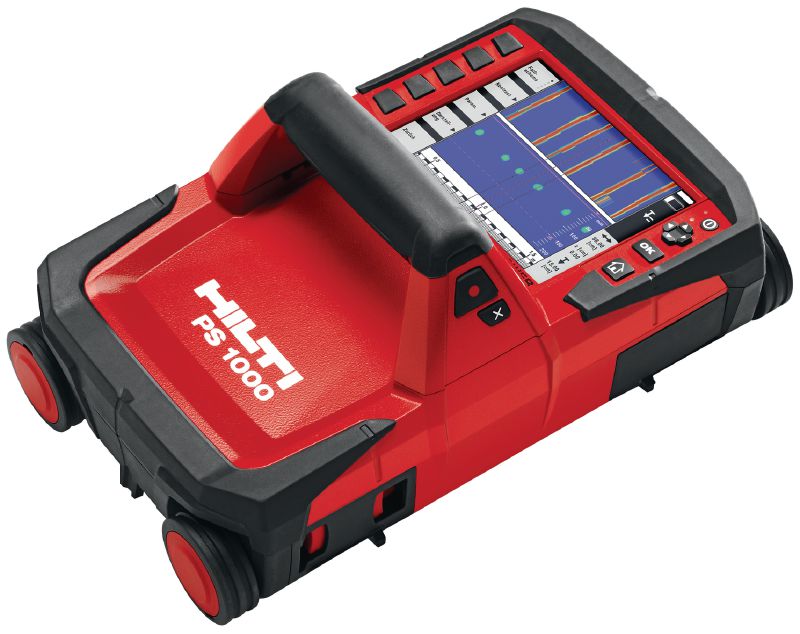Discover RainierGPR Service Areas Near You for Professional Concrete Scanning
Wiki Article
Concrete Scanning: An Important Action Towards Guaranteeing Structural Honesty and Security
In the world of building and facilities upkeep, the importance of concrete scanning can not be overstated. This precise process holds the essential to introducing possible threats concealed underneath the surface area of seemingly solid frameworks. By utilizing advanced technology and methodologies, concrete scanning functions as a pivotal device in ensuring that the stability and safety of bridges and structures are upheld to the highest requirements. Nevertheless, past its surface-level implications, the function of concrete scanning prolongs much deeper than fulfills the eye.Importance of Concrete Scanning
Concrete scanning plays a crucial role in guaranteeing the architectural integrity and security of structures and facilities tasks. By making use of innovative innovations such as ground-penetrating radar (GPR) and electromagnetic induction, experts can non-destructively check concrete frameworks to detect possible defects, spaces, ingrained items, and reinforcement design. This procedure enables early discovery of anomalies that can endanger the stability of a framework, stopping pricey damages and making certain the safety of passengers.Prior to boring, cutting, or coring right into concrete, scanning helps determine the precise locations of rebar, post-tension cable televisions, and various other ingrained aspects, minimizing the risk of unexpected hits that might lead to architectural weaknesses. Furthermore, concrete scanning help in top quality control by validating the thickness of concrete covers and finding any discrepancies that may affect the total sturdiness of the structure.
Modern Technology for Concrete Evaluation

Advantages of Very Early Detection
Timely discovery of structural problems can substantially mitigate risks and guarantee the longevity of construction jobs. By identifying prospective troubles early in the building process, stakeholders can take aggressive measures to attend to concerns prior to they escalate into bigger and more pricey troubles. One of the essential benefits of very early detection is the avoidance of structural failings, which can posture major safety and security risks and lead to project delays and monetary losses.Furthermore, early discovery enables prompt repairs and upkeep, which can assist prolong the life expectancy of the framework. By resolving concerns quickly, building and construction teams can avoid expensive fixings or perhaps the requirement for premature substitute of structural elements. This positive method not just conserves time and money yet also boosts the general safety and sturdiness of the building project.
Additionally, very early discovery can enhance task preparation and decision-making by supplying stakeholders with important insights right into the condition of the framework. Equipped with this details, task supervisors can make enlightened options relating to building approaches, timelines, and materials, causing more effective and effective job outcomes.
Ensuring Structural Stability
Making sure the structural security of a construction job is critical to its security and longevity. Structural stability describes the capability of a structure or infrastructure to maintain its type and feature under ecological problems and different loads. To achieve this, extensive evaluation and monitoring of the structure are crucial. Concrete scanning plays a vital function in making certain architectural stability by detecting potential issues such as voids, delamination, or reinforcement rust that could jeopardize the stability of the framework over time.By using advanced scanning innovations like ground-penetrating radar (GPR) and electro-magnetic induction, building professionals can non-invasively evaluate concrete structures to determine areas of problem below the surface area. This aggressive strategy enables have a peek at this website the very early detection of flaws or weaknesses, allowing timely fixings or reinforcement to avoid architectural failings.
Routine concrete scanning throughout different building and construction phases and throughout the life process of a framework can assist preserve its stability, minimize dangers, and ensure the safety of residents. By focusing on structural security via concrete scanning, construction jobs can enhance their durability and sturdiness, eventually adding to higher safety and security and durability.
Avoiding Essential Failings
To safeguard versus catastrophic occasions, careful tracking and positive upkeep are essential in avoiding critical failures within structural structures. Spotting possible problems before they rise is essential to stop structural failings. Carrying out routine evaluations, such as concrete scanning, can reveal hidden problems like spaces, cracks, or rust that can jeopardize the integrity of a framework. By using sophisticated scanning technologies like Ground Permeating Radar (GPR) or Concrete X-ray, designers can non-destructively examine the problem of concrete and identify powerlessness that need reinforcement or repair - RainierGPR Service Areas.
Verdict
Finally, concrete scanning plays a vital role in ensuring architectural honesty and security by using advanced technology for early discovery of possible concerns. This positive approach aids stop essential failures and makes certain the stability of frameworks. It is crucial basics to focus on concrete examination as a conventional technique to shield the long life and safety and security of structures and framework.Concrete scanning plays a critical role in making sure the architectural honesty and safety of buildings and framework projects. Furthermore, concrete scanning help in quality control by validating the thickness of concrete covers and detecting any type of discrepancies that may influence the total sturdiness of the framework. Concrete scanning plays an essential role in guaranteeing architectural stability by detecting possible issues Your Domain Name such as gaps, delamination, or support corrosion that could compromise the honesty of the framework over time.

In verdict, concrete scanning plays an essential duty in ensuring architectural integrity and safety by making use of sophisticated innovation for early detection of potential concerns.
Report this wiki page